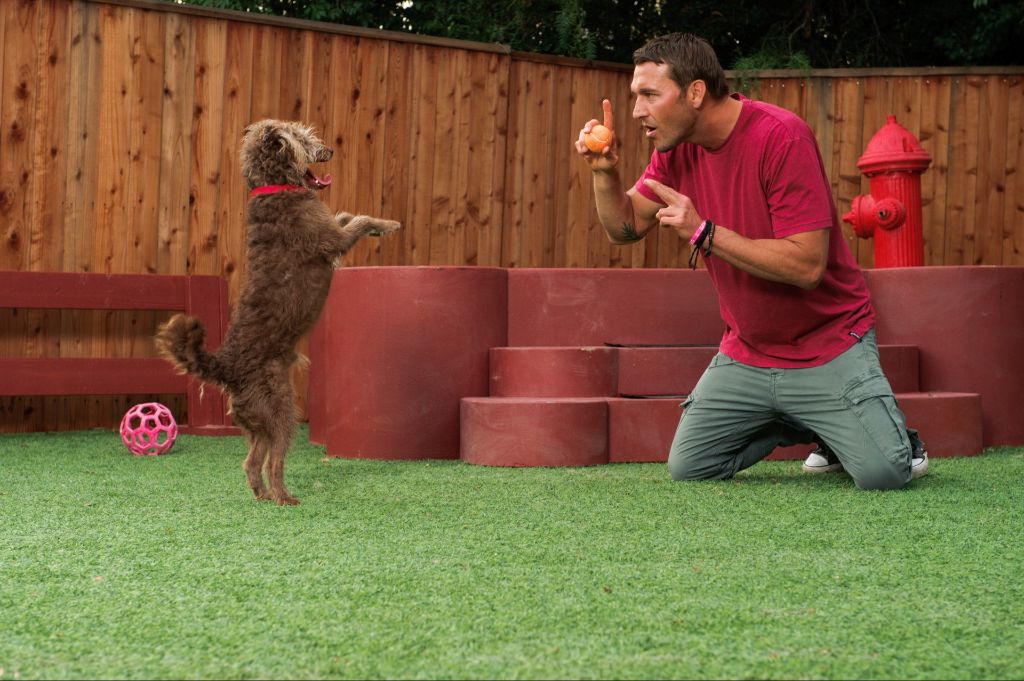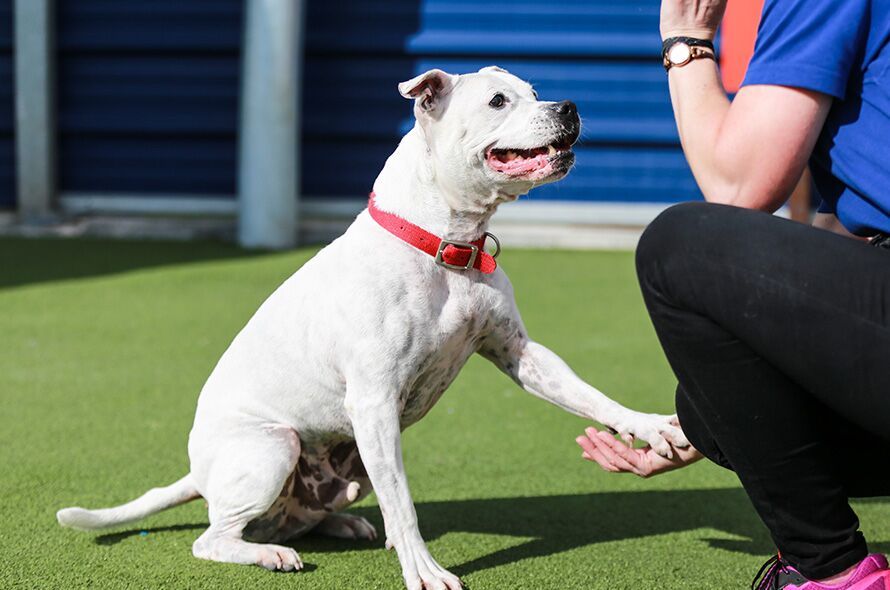Introduction
Teaching your dog to bark aggressively on command can be a useful skill for alerting you to danger or deterring potential intruders. However, this is an advanced technique that requires time and patience to train properly. When done right, it can help keep your family and home safe. But it’s important not to overdo it, as excessive aggression in dogs can lead to behavioral issues.
The goal is to teach your dog to bark powerfully only when you give the command, not at every little noise or movement. With reward-based training and incremental steps, most dogs can learn this skill. However, not all dogs have the proper temperament for aggressive barking. It’s important to assess your dog’s personality first before attempting to train this behavior.
Assess Your Dog’s Temperament
Before trying to teach your dog aggressive barking, take some time to honestly assess your dog’s natural tendencies and temperament. Some dog breeds like German Shepherds and Dobermans are more prone to aggressive barking than others. However, any breed can potentially develop problem barking behavior if not handled properly.
Consider your dog’s age as puppies and seniors may not have the patience for intensive training. Look for any signs of anxiety like trembling, panting or destructive chewing which could be exacerbated by aggressive bark training.
You know your dog best. Think about their sensitivity levels. A dog that startles easily or is very nervous may not be a good candidate for bark training. An excessively exuberant or high-strung dog is also not an ideal choice, as they need calm, consistent leadership. Choose a dog with an even temperament and based on your own experience handling them.
Use Reward-Based Training

Positive reinforcement works best when teaching a dog to bark aggressively. This means rewarding your dog every time he barks on cue. Pet him, give him a treat, or tell him “good boy” when he barks at the right moment. You want him to associate barking on command with something he enjoys.
Avoid punishing or scolding your dog for barking at the wrong times. He may become confused and frustrated, which can actually encourage more “demand barking” when he wants attention. Stick to rewards only. This will build trust between you and your dog while reinforcing the behavior you want.
Start with Basic Bark Training
Before you can teach a dog to bark aggressively on command, you first need to teach it to bark on command in a normal, friendly manner. This is an important foundation skill. Start by teaching your dog the “speak” command using positive reinforcement training methods. Here are some tips for teaching speak:
- Wait until your dog barks naturally, then immediately reward with a treat and praise. Repeat this often so your dog connects barking with rewards.
- Once it consistently barks for treats, start saying “speak” right before you expect it to bark, then reward.
- Over time, say your speak command first, wait for your dog to bark, then provide the reward. Gradually extend the waiting period.
- Practice in short sessions multiple times a day until your dog reliably barks on just the speak command.
- Use an upbeat, encouraging tone when saying “speak” so you don’t sound aggressive.
- Be patient – some dogs pick this up quickly, while others may need more repetition.
Mastering the basic speak command will make it much easier to later shape your dog’s barking into an aggressive tone when needed.
Add a Visual Cue

Once your dog has mastered barking on command, it’s time to add a visual hand signal or other cue that tells your dog when to bark aggressively. This allows you to trigger the aggressive barking behavior from a distance or when your dog can’t hear you. The cue should be distinct and easy for your dog to see. Some options to consider:
- A pointed finger – Simply point at what you want your dog to bark at.
- Raising a flat palm – Hold your hand up like a stop sign when you want your dog to bark.
- Waving a hand – Use an exaggerated waving motion to trigger aggressive barking.
- Standing in an authoritative pose – Plant your feet and stand tall to cue your dog.
As you practice the visual cue, say your verbal bark command at the same time so your dog learns to associate the two. Reward your dog immediately after he barks on hand signal. Be patient as your dog learns this new cue. Keep training sessions positive and upbeat with lots of praise and treats when your dog responds correctly.
A reliable visual cue allows you to prompt aggressive barking from across a room or yard, adding greater versatility and control to this important behavior. Just be careful not to overuse it and confuse your dog. Only give the cue when you actually want an aggressive bark. The hand signal should mimic real-life situations requiring your dog’s protective instincts.
Practice in Controlled Settings
Before you take your dog’s aggressive barking practice into public spaces, it’s important to start in more controlled environments where you can carefully manage the intensity. This allows your dog to become comfortable with the training and prevents overstimulation. Start inside your home or in a securely fenced backyard, where there are minimal distractions.

Once your dog has mastered barking on cue indoors, move the training outside to your yard or driveway. You can enlist a helper to walk by outside the fence or ring the doorbell to trigger your dog’s barking. Always reward successful barks. Gradually increase the intensity by inviting people closer or adding more real-life triggers.
Outdoor public spaces like parks should be the last step. Only practice in areas where dogs are allowed off-leash and start at less busy times before building up to real-world situations. As the environments become more stimulating, keep a close eye on your dog’s reactions so you don’t push too far too fast. The key is creating manageable steps to ensure success.
Use Real-Life Triggers
Once your dog reliably barks on command, it’s time to practice in real-life situations. The end goal is for your dog to bark aggressively when faced with potential threats. Strangers approaching your home or yard are common real-life triggers that can cue your dog to bark.
Start by having a friend or family member your dog doesn’t know well approach your front door. Have them ring the doorbell or knock while you cue your dog to bark. Reward your dog with praise and treats for barking aggressively.
You can also practice in your backyard or on walks. When a stranger approaches, give your dog the bark cue. Again, reward the desired aggressive barking behavior. Pay attention to your dog’s natural body language and tendencies. Some dogs may automatically perceive strangers as a threat.
In addition to people, pay attention to noises and sounds that maycue your dog to bark. Things like the mail truck pulling up, unexpected doorbell rings, or unusual nighttime noises can all be opportunities to practice aggressive barking.
The key is to start in controlled settings, then slowly work up to real-life triggers. Always reward desired behavior and avoid accidentally reinforcing fear-based reactions.
Avoid Overdoing It
While teaching your dog to bark aggressively on command has its uses, you don’t want your dog acting aggressively in normal day-to-day situations. It’s important to reinforce that the barking behavior is only for specific times you cue it.
Make sure you practice the aggressive barking in a variety of controlled settings at first – not in busy or unpredictable environments. And don’t overpractice to the point that your dog starts barking aggressively when you don’t ask for it.
Additionally, be very careful and selective when using real-life triggers to practice with. You don’t want your dog to start viewing things like visitors, delivery drivers, or passersby as threats without cause.
Work on obedience training in tandem with the bark training so your dog looks to you for direction and permission before barking aggressively. With the proper precautions, you can teach your dog to bark aggressively on cue without it becoming a problem behavior.
Be a Strong Leader

Dogs are pack animals and naturally look to a leader. As the owner, you need to establish yourself as the confident leader your dog can look to and respect. Some key ways to project leadership and gain your dog’s obedience include:
- Use a firm, authoritative tone when giving commands.
- Make direct eye contact when working with your dog.
- Keep your body posture tall and assertive, not nervous or meek.
- Set clear rules and boundaries and stick to them.
- Reward good behavior more than punishing bad.
- Remain calm and do not overreact to your dog’s actions.
- Be consistent with commands and what you allow and don’t allow.
- Do not let your dog control you or manipulate you.
You want your dog to respect you and look to you for guidance and care. By being a confident, trustworthy leader, your dog will be more likely to obey training and not feel the need to act out with excessive, aggressive barking. Make sure everyone in the household projects strength and consistency with the dog as well.
Know When to Get Help
Teaching your dog to bark aggressively on command requires patience, consistency, and a deep understanding of canine behavior. If you are struggling to make progress, consult a professional dog trainer or veterinary behaviorist. They can assess your individual situation and determine why your dog may not be responding as desired.
A professional can identify potential medical issues causing behavioral problems, such as thyroid disorders. They can also evaluate your training methods and relationship with your dog. This provides invaluable guidance on modifying techniques, building trust, and overcoming specific challenges. If your dog shows signs of unwarranted aggression, anxiety, or other issues, seek help right away.
While teaching aggressive barking, be alert for any indications your dog is uncomfortable or stressed. If you notice excessive panting, trembling, avoidance behaviors, or other signs of fear or anxiety, stop immediately. Pushing too hard can worsen any underlying problems. The wellbeing of your dog comes first. With the right approach and expert assistance as needed, you can teach assertive barking in a healthy, positive way.
